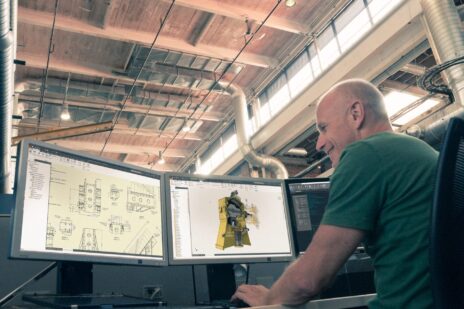
Direct modeling is a relatively new process when it comes to computer aided design, but it is one that is revolutionizing how engineers can create products.

Direct modeling allows engineers to create complex surfaces and rearrange parts with very little effort. Creating complex flowing designs is a time-consuming process in parametric modeling and this is one area where direct modeling shines. Previous workflows would have required the engineer to create multiple sketches linked together to form a part that was organic in nature. Direct modeling allows the engineer the same capabilities that sculptors have. Engineers can simply push, pull, twist, etc. to manipulate a part. It meets the needs of the fast-paced design industry and allows engineers to create without the traditional boundaries of parametric modeling.
Many engineers in modern design operate mainly in the direct modeling world diverging from trends of just 10 years ago. However, direct modeling isn’t just about creating “pretty” designs, it also is about having the power to edit your parts without neglecting physical characteristics of the design. Direct modeling allows you to adjust a design organically without worrying about voiding certain necessary parameters set earlier in the design. This ultimately means that when a designer needs to alter a product per the client’s request – or any reason – it becomes an easy haptic process.
Pretty much all of the modern CAD programs have direct modeling integrated into them. It’s a workflow that is just too essential to the modern engineer. In Autodesk Inventor, you can use direct modeling techniques to move, rotate, resize, or scale features from imported geometries. The easy push/pull controls allow designs to be modified for quote. All of this functionality ultimately leads to faster iterations between simulations and directly editing the geometry. If you want to learn a little more about direct modeling in inventor, you can check out the video below.


